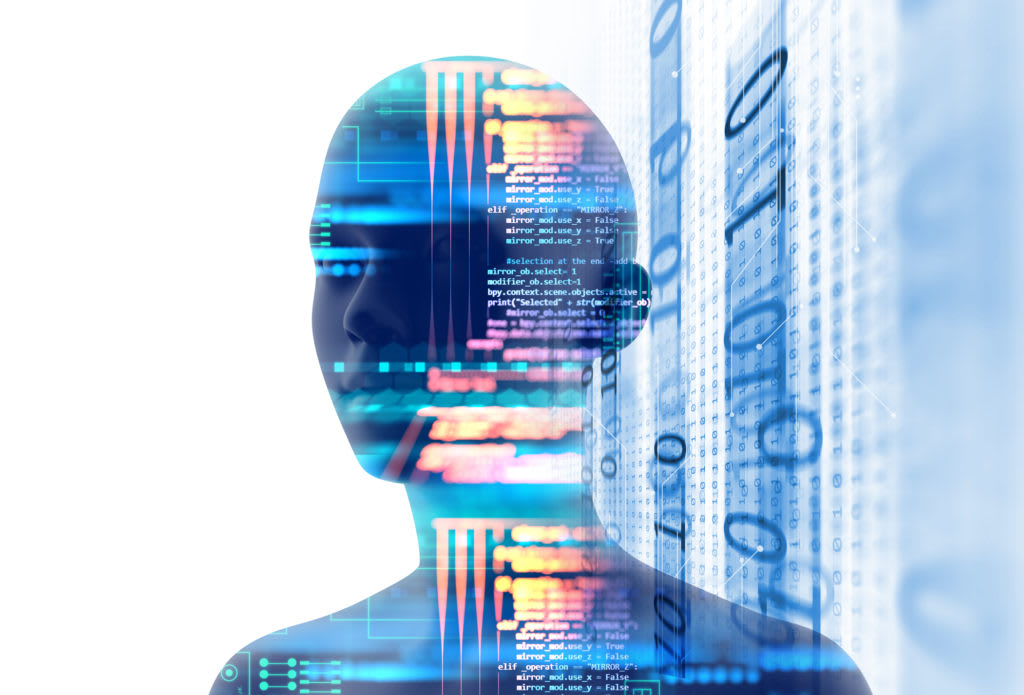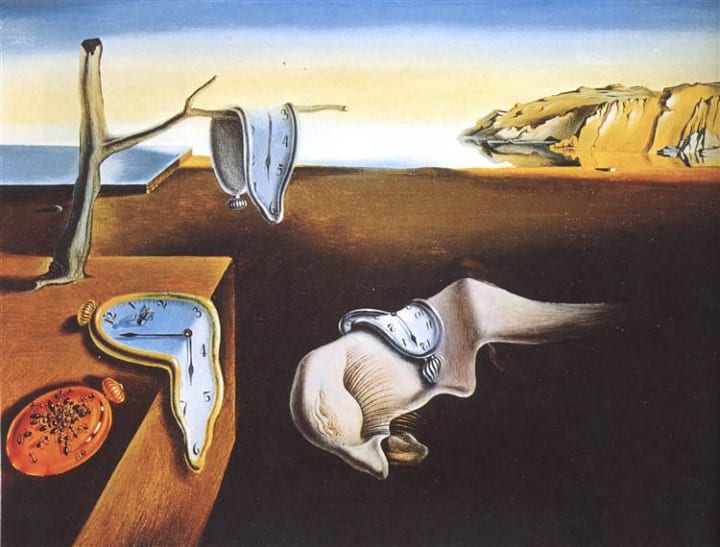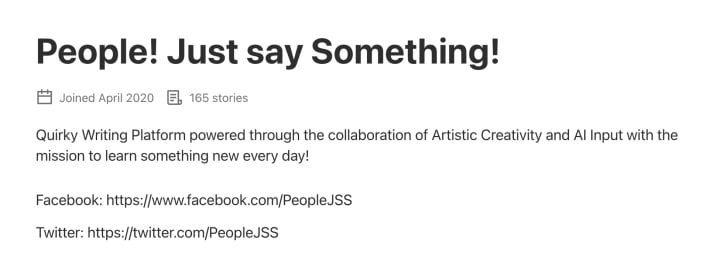AI Writing Assistants and the Meaning of Art
This post will let know our thoughts on AI Assistants, the meaning of Art in the 21st century, and how we wish to pursue creating content moving forward with this technology.

*This post was NOT created with the support of an AI writing assistant, however, spell check and Grammarly were present in the final editing process*
Over the past couple of months, it seems that the world of AI has improved its functionality and in turn has received much more attention in the mainstream media.
The rise of ChatGPT has shaken the artistic world, and with it brought forward questions that I, as an independent artist that continuously question the meaning of art, could not help but answer - or at least attempt to answer.
It is important to state that ChatGPT is in no way the beginning of such creative assistance. One could argue that Microsoft Word and its grammar and spell check was, despite operating on a much simpler level, a form of AI writing assistant that helped us create content to a higher level. This form developed further as new technologies were adapted and released to the public, such as Grammarly, writer.com, and others. This technology has been here for some time now, it's just that nobody was paying real attention to it before.
This is why I believe that we stand at a pinnacle stage in history - not only for the world of creative writing but for art itself.
In this post, I will provide a brief example of a similar event in art history that I believe could act as an insight into where the world of artistic creativity and the use of AI could be heading towards moving forward; what I believe 'Art' to be at its base core despite any subjective opinions or set social dogmas; and how I, People!JustSaySomething!, and many of my other projects will operate in the world of Creative AI Assistance moving forward.
DADA and the Art of Chance
Amid the turmoil of the First World War, in the deep corners of the streets of Zurich, Switzerland, a group of artists came together to release forth a hub filled with chaos and cherished all things 'anti'. Anti-war, anti-bourgeoise, anti-art. The Cabaret Voltaire was born and with it arguably the most important movement in the history of modern art - Dada.
Dada provided a new insight into what it means to be an artist and shook the core definition of art itself. No longer would grand paintings in graveyard-like museums stand as the pinnacle of artistic expression. The Dadaists proved that anything or anyone can be an artist, any material or thought can be used as the material, and anything or anyone can be an audience. It questioned all that we knew before and, expectingly, many were against this chaotic new artistic form.
The dadaists, despite social scrutiny from the bourgeoise, continued to explore and create by means not seen before. No longer would a painting take days, weeks, months, or even years to complete - the dadaists could create art within a matter of minutes before starting the next.

One popular way of doing so was to cut up independent words from an article, place them inside a bag, shake it, and take each word out of the bag one by one to form a sentence structure not seen before - a dada poem. Despite not choosing the words themselves, the poem did force a reaction from one who read it; it just didn't matter what kind of reaction it was.
Another way the dadaist created pieces of art was again through the use of chance, however, instead of creating poems through word cut-outs they would throw sticks and other materials found laying around onto canvases layered with glue. Where the pieces landed they would stick, creating unusual patterns and mesmerising visuals, and the audience would love, hate, laugh, cry, and everything in between despite the method used to create the piece of art. The relationship between artist-art-audience was disturbed, and a new frontier opened itself to the world of art.
From Dada and "nothing", came Everything.

There is much to explore in Dada's history, and its roots are still felt within many artistic forms that came after it. Despite being anti-art at its core, it allowed other artistic movements to develop. Many didn't reach such extremes that Dada surrounded itself with and instead, each decided where on this new continuum of artistic expression they felt most comfortable. Movements such as Surrealism, Conceptual Art, Pop Art, and new forms of Performance arose from the rubble of Dada. These movements, despite having more distinct artistic inspiration and more traditional uses of materials and form all derive from the creative rethink that Dada allowed - despite the initial apprehension that came with it.
What is 'Art' and how does AI operate within it?
Sometimes, it is not important what we want to believe to be true, but rather accept the truth regardless of our want for it to be false.
The countless hours of research I have done into art history, artistic movements, and what it truly means to express oneself in this world has allowed me to remove the layers of fat that social dogmas have placed over this hugely important question - What is Art?
This question can be answered in countless ways, explored through many angles, and supported by endless evidence, however, each time I have this discussion with other fellow artists when trying to answer the unanswerable, I end with what I believe not to be a conclusion, but a comfortable end. Art, or its relationship dynamic, operates at its base core in the below equation:
(Artist or Artistic Expression x Material) + Audience = Experience or Response.
This equation allows us to, without any subjective beliefs or dogmas, explore the relationships that a proposed piece operates within the world of art. I will now use this equation and apply it to AI and answer if it operates within my equation model of artistic expression.
We begin with the artist. You, me, or whoever decides to log onto their computer to use the AI Writing Assistant. The important factor within this relationship is that the AI won't operate without the initial command - the spark that sets it into motion. This spark is your initial idea, your vision of what you want the piece to be, and your creative input.
At the base of our equation, you are an artist with a vision, you just need the tools to bring your vision to life.
We then move to the material. Each artist needs its tools, and these tools need to produce something that can later be reacted to by something or someone (the audience) - this is where things tend to get subjective. The most common form of artistic material is canvas, paint, paintbrushes, paper, pens and pencils, etc. These are all materials that begin in one form and with the help of the artist, become something else.
Not that long ago the use of pen and paper for literature purposes was developed and expanded to the use of computers, laptops, and other machinery that allow textual creation on their models. This is still considered literature and thus art. Yet, when you look deeper into this model we realise that it is not the letters that we're commanding but a complex programme of 1's and 0's - code that allows us to see the art that we wish to present. The code, and the electronic device that allows the code to operate, are the material.
The AI Writing Assistant, operating through these layers of code to present sentence structures or visual aspects of all the material it has access to (the internet), operates in the same way as Dada did over 100 years ago - through Chance and preset material. The biggest difference is that the AI is programmed to find the most acceptable word, phrase, or visual to fit the information we gave it, however, these outputs are still up to chance the more it adds to its information pool.
Therefore, just like the various colours of the pencil box and our human choice of colour, the AI chooses its colour within the largest pencil box in existence, and through chance, we get the artistic output we desire, or thought we desired.
All that is left is the audience. Someone or something to react to our piece of art in some way. They can love it, hate it, learn from it and become better people or forget about it at the earliest possibility. Regardless, an experience, or expression, is formed. Some reaction to art is present, regardless of how it was created.
In regards to the audience's reaction, the expression left from the piece of art after its creation, I have not much to say. I am not one to challenge what one should feel or how they are to react to a piece of art - that is deeply personal to the one in the equation. What I will argue, however, is a blind rejection of something true despite all aspects operating in similar ways in other forms that they accept as total truths are arrogant and irresponsible. If it works here and works just as well there, what is the difference?
To many, two similar truths are not the same depending on what they wish to believe is true. Let's not blindly reject core truths when evidence is presented - we have enough of that in politics already.
Moving Forward...
Moving forward I finally have to make the decision that I have been waiting for my whole artistic life. I can either accept this new unknown, explore it, and build a deeper understanding of what AI can provide in art, or reject it completely and stay where I am comfortable, with forms I understand and methods that have been done before.
I choose to accept the unknown.
Just like the Dadaists at the Cabaret Voltaire, with screeches of the Bourgeoise filling the streets of what "true art really is", I will not stand in the way of exploration and the development of art. The rise of AI and its place within art, something we believed to be something deeply animalistic, and deeply human, and how it will affect all that is to come moving forward is exciting and brings forth more questions than answers. I wish to be there when the questions are asked and help find the answers - if they can, or even should, be found.
We can learn one thing from the Dadaists - you cannot stop art.

This is why moving forward, I will begin using the assistance of AI to create new content - both on People!JustSaySomething! and many other projects alongside work completed without its help. Following the new guidelines that platforms like Vocal have in place for AI-supported work, I will label it accordingly and provide as much background to help understand the content created and how AI helped in doing so. I will also identify this space as both a 'Human and AI creative platform' and will aim to operate as such. As AI technology develops, we hope to be at the forefront of it all and we hope you join us for the ride.
I see a lot of benefits for how People!JustSaySomething! can operate within the world of AI and has provided me with a new goal for the platform - learn something new every day. With the help of AI Writing Assistants, this goal should be achieved easier and provide more informed content at a quicker pace.
I am excited to see where this goal will take me.
This does not mean that all the work I do will be created with the help of AI. I will continue to create work with no support, as many experiences I wish to write about can only be expressed by me and not a computer. I know what I felt when walking through the streets of London, the AI does not. A balance of the two will allow me to gather data and begin to form a more detailed opinion on this new form moving forward.
Just as Dada was a huge step forward in the development of abstraction, and helped pave the way for new, fascinating things, why can't AI be the same? Technology will continue to develop as the world begins to wake up to the concept of AI, and what we understand of it now may look completely different, operate in a completely new way, and present completely new results in the future.
This is all exciting, and we are all pioneers in this new stage of Art History...
Let's see what we can create!
- David Wici
About the Creator
People! Just say Something!
Quirky Writing created by Artistic Creativity and the power of AI with the goal of learning something new every day!
Facebook: https://www.facebook.com/PeopleJSS
Twitter: https://twitter.com/PeopleJSS
Reader insights
Nice work
Very well written. Keep up the good work!
Top insights
Easy to read and follow
Well-structured & engaging content
Excellent storytelling
Original narrative & well developed characters
Expert insights and opinions
Arguments were carefully researched and presented
Eye opening
Niche topic & fresh perspectives
On-point and relevant
Writing reflected the title & theme







Comments (12)
I really appreciate the way you rooted current AI art movements in art history, as someone who has studied Dada you are spot on in the influence.
harika hikaye, başarılı. tebrik ederim
A true Writing cannot be done with any Ai tools, It is a heart to heart matter. Loved you content
Hello, Thank you for this. I actually am doing research on ChatGPT right now. I have created some work with it. It didn't serve me well at all. The content comes out crappy. Furthermore, I have to agree, it is not what most think it is. Well, not yet. I think it's scripting on steroids. Now, as far as replacing humans with content, not there. But I have noticed some features in ChatGPT that can help better images. That being said, pen to paper will always bring out the best. Great article. I wish you well.
nice work 👍
It is absolutely necessary to control the content written by ChatGPT. I've been researching for a long time and I've noticed that when he writes about a new topic, he often uses the same templates. This needs to be developed. There are already bots that detect content written with artificial intelligence, and in all my experiments, it detected that ChatGPT wrote the article. Google will do a core update so that content produced this way is worthless.
Nice work
Everything, even generated, I believe is coming from the Infinite Intelligence of the Universe. The Universe is supreme processor, that processes everything at the speed of creation. That's why the arts that were generated by AI like you mentioned simply have different meaningful meanings to different people.
My journey in life is to learn something new every day. Thank you for sharing such a wonderful and interesting story.
Every story you write is just a unique experience.
What a great article! Insightful and educational and somewhat reassuring. You can't stop art! ❤️
Good